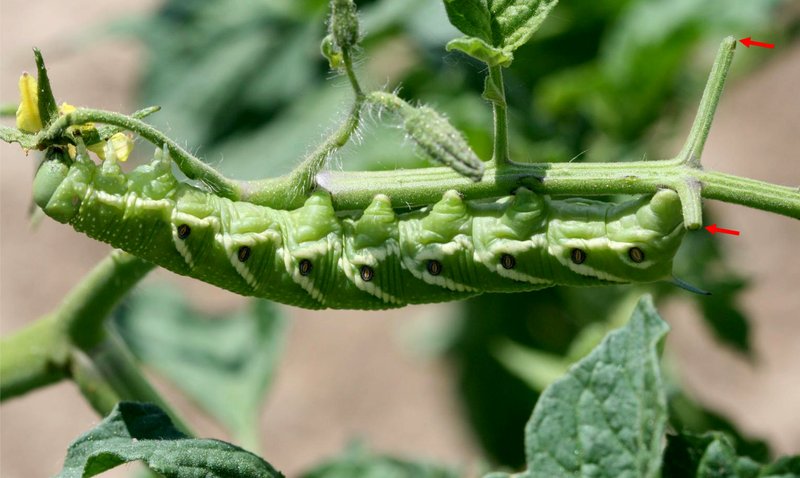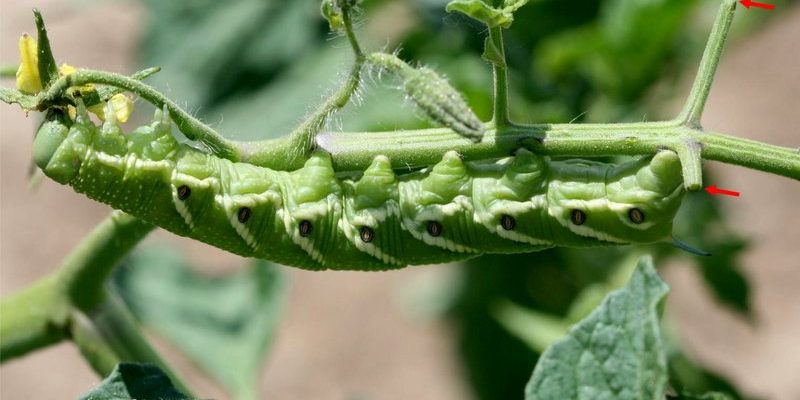
Crop rotation is a bit like changing your exercise routine. Just as mixing up workouts can keep your body guessing and improving, rotating your crops helps maintain a healthier soil ecosystem and disrupts pest cycles. When you plant the same crops in the same spot year after year, pests like hornworms get comfortable. Think of crop rotation as preventing those pests from settling into a familiar neighborhood.
So, let’s dive deeper into this gardening strategy and see if crop rotation can indeed help manage hornworm populations and keep your garden thriving.
What Are Hornworms?
Before we get into crop rotation, it’s important to understand what hornworms are. These caterpillars are the larval stage of several species of moths, primarily the tomato hornworm (*Manduca quinquemaculata*) and the tobacco hornworm (*Manduca sexta*). They’re notorious for their insatiable appetite. Just one hornworm can devour large portions of your plants in a short time.
Hornworms are usually bright green, about 3 to 4 inches long, and they sport a distinctive horn-like structure on their rear end, which gives them their name. They blend in well with the leaves, making them hard to spot until the damage is done. You might be wondering, “Why are these pests such a problem?” Simply put, they can quickly devastate your crops, leading to significant loss if not managed properly.
Knowing your enemy is the first step toward a successful gardening strategy. By understanding the habits and life cycle of hornworms, you can take more effective steps to protect your crops.
How Does Crop Rotation Work?
Now that we know what hornworms are, let’s unravel how crop rotation works. In basic terms, crop rotation involves alternating the types of crops you plant in a specific area from season to season. For example, if you plant tomatoes in one spot this year, you might sow beans or corn in that same space next year.
This practice helps improve soil health and reduces the risk of disease and pests. Here’s the thing: many pests, including hornworms, are attracted to specific plants. When you rotate your crops, you can disrupt their life cycle. If they don’t have their preferred food source available, they’ll be less likely to thrive.
Additionally, different plants have varying nutrient needs and root structures. By rotating crops, you can help prevent soil depletion. For instance, legumes like beans can fix nitrogen in the soil, which benefits the following crops. So, in a way, crop rotation promotes a more balanced ecosystem within your garden.
Benefits of Crop Rotation for Hornworm Management
So, how exactly does crop rotation contribute to managing hornworm populations? Here are a few key benefits:
- Disruption of Pest Life Cycles: Crop rotation means that hornworms won’t have access to their preferred host plants year after year. This disruption can reduce their numbers over time.
- Improved Soil Health: Healthy soil can support a diverse array of beneficial insects and organisms that help control pests naturally. A well-balanced ecosystem can reduce the likelihood of hornworm infestations.
- Fewer Crop-Specific Diseases: Many pests and diseases are crop-specific. By changing what you plant, you can limit the frequency of these issues.
When you think about it, crop rotation is like changing the locks on your front door. It keeps the unwanted pests from feeling too at home in your garden.
Best Practices for Crop Rotation
If you’re ready to put crop rotation into practice, here are some best practices to consider:
1. **Plan Your Rotation**: Create a rotation plan for at least three years. This might involve grouping plants by family—like nightshades (tomatoes, peppers, and potatoes) versus legumes (beans and peas).
2. **Keep Records**: Track what you plant each year. This can help you maintain a successful rotation and identify patterns that may arise, like repeated pest problems in certain areas.
3. **Alternate Families**: Rotate crops among different plant families whenever possible. For example, if you planted tomatoes this year, follow them up with beans, then perhaps brassicas like broccoli or cabbage next.
4. **Incorporate Cover Crops**: Planting cover crops during the off-season can further improve soil health and suppress weeds, which can also aid in pest management.
By integrating these practices, you can create a dynamic garden that keeps both your soil and plants healthy while minimizing hornworm issues.
Complementary Strategies to Crop Rotation
While crop rotation is a powerful tool, it’s best used alongside other strategies to manage hornworms effectively. Here are a few complementary methods:
– **Handpicking**: Regularly inspect your plants and remove hornworms by hand. It might sound tedious, but it’s incredibly effective—like giving your plants a little TLC.
– **Natural Predators**: Encourage beneficial insects, like ladybugs and parasitic wasps. These creatures can help keep hornworm populations in check. Planting flowers like marigolds can attract these helpful allies.
– **Neem Oil or Insecticidal Soap**: Consider using organic pesticides like neem oil or insecticidal soap on infested plants. These can disrupt hornworm feeding without harming beneficial insects when used properly.
Together, these strategies create a comprehensive approach to pest management.
So, does crop rotation help with hornworms? The answer leans toward yes, but it’s not a standalone solution. Crop rotation is like a piece of a larger puzzle in your gardening journey. It can significantly improve soil health and disrupt pest life cycles, making it harder for hornworms to thrive.
You might not see immediate results, but over time, you’ll likely notice healthier plants and fewer pests. Pair this technique with other management strategies, and you’ll arm yourself with a toolkit to protect your garden.
As you plan your next gardening season, consider how crop rotation can fit into your strategy. It’s a simple change with the potential for big rewards! Happy gardening!

